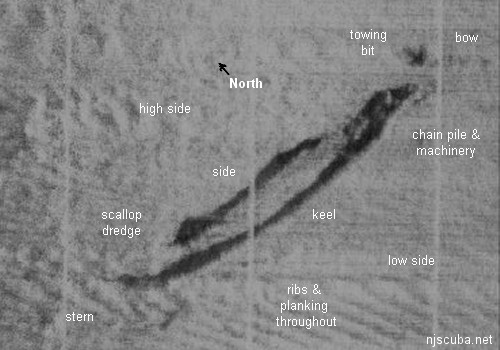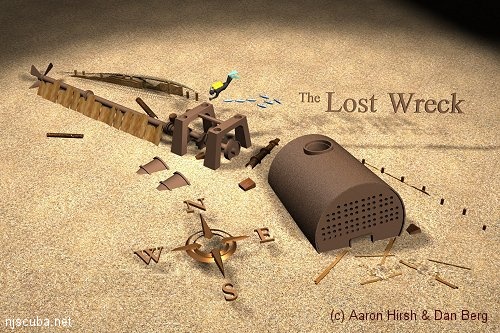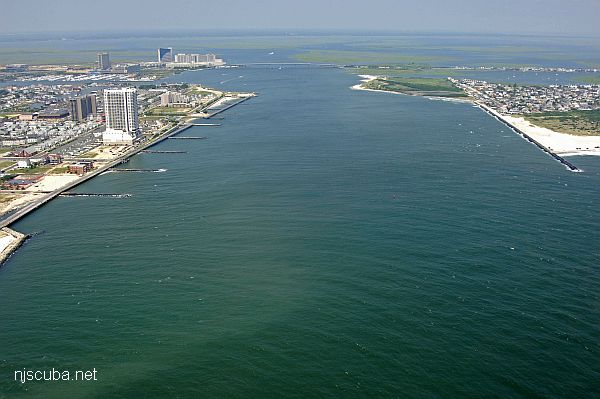Dive Sites (1/45)
More: Dive Sites ...
- Depth:
- 110 ft
This unidentified wood wreck sits in 110 feet of water 17 miles out of Fire Island Inlet. The wreck was found by Captain Jay Porter the wreck was apparently named for the weight of a large codfish caught on the site. The wreck's wooden ribs only protrude a foot or so out of the sand but divers report that the site is excellent for catching large lobsters. A few years ago Captain Billy DeMarigny found the ship's bell. Unfortunately, no name was on it.
More: 59-Pounder ...
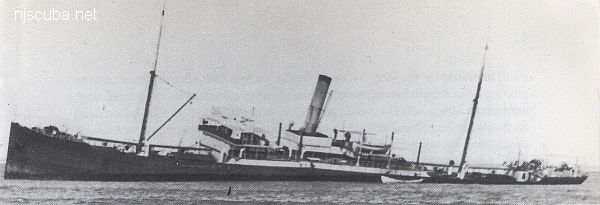
- Type:
- shipwreck, freighter, England
- Built:
- 1898, England
- Specs:
- ( 380 x 47 ft ) 4193 gross tons
- Sunk:
- March 1, 1902; ran aground in storm - no casualties
- Depth:
- 25 ft
The Acara lies 1,500 to 1,800 ft offshore, in 25 ft of water. She is quite broken up, with wreckage spread over a wide area. Still, there are one or two sections with 10 feet or so of relief. Brass fittings and other artifacts are still being found.
More: Acara ...
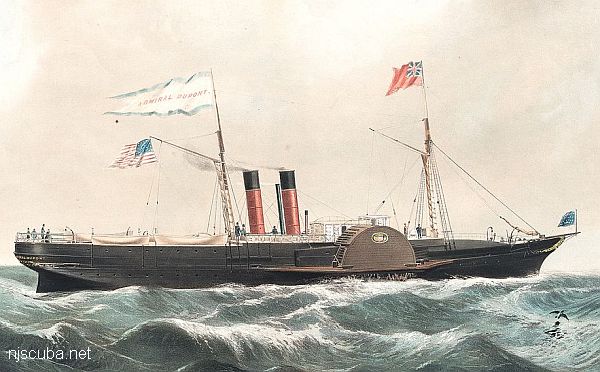
- Type:
- shipwreck, steamer, USA
- Built:
- 1847, England, as Anglia
- Specs:
- ( 195 x 28 ft ) 750 gross tons, 50 passengers & crew
- Sunk:
- Thursday June 8, 1865
collision with ship Stadacona - 17 casualties - Depth:
- 150 ft
More: Admiral DuPont ...
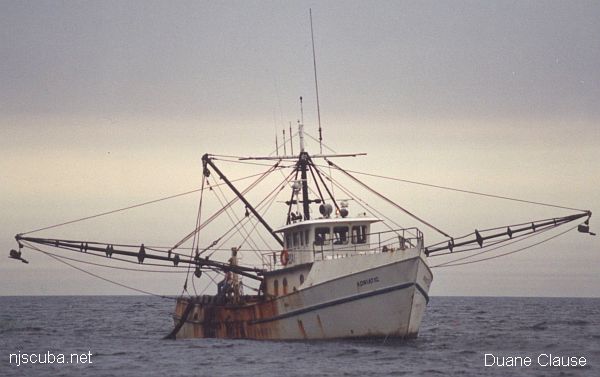
"This picture was taken several years ago by my wife, Debbie. We were searching for the Adriatic's lost clam dredge that day. Later, after the sinking, my group of divers was the first to dive on and identify her. I used this picture at the dive site to set the dive plan and objectives."
- Capt. Duane Clause, Porthole II
- Type:
- shipwreck, clam dredge, USA
- Built:
- 1977, Master Marine, Bayou La Bâtre AL USA
- Specs:
- ( 74 ft ) 134 gross tons, 4 crew
- Sunk:
- Monday January 18, 1999
foundered in rough seas - no survivors - Depth:
- 65 ft
More: Adriatic ...
- Type:
- shipwreck, sailing ship, Italy
- Specs:
- 566 tons
- Sunk:
- March 4, 1881; ran aground in storm - 1 survivor
- Depth:
- 25 ft
Also known as the Italian Wreck, the Ajace was sunk at 4:00 AM on March 4, 1881. At the time, she was carrying a small cargo of scrap railroad iron and 2,040 empty petroleum barrels. While bound for New York from Belgium, the Ajace was caught in one of the worst storms of the year and ran aground off Rockaway beach. Many sources report that Captain F. Morice, seeing that all hope was lost, opened his private supply of brandy and shared it with his crew. Soon after, the crew became badly beaten from the pounding of the waves and drunk from the brandy.
More: Ajace ...

